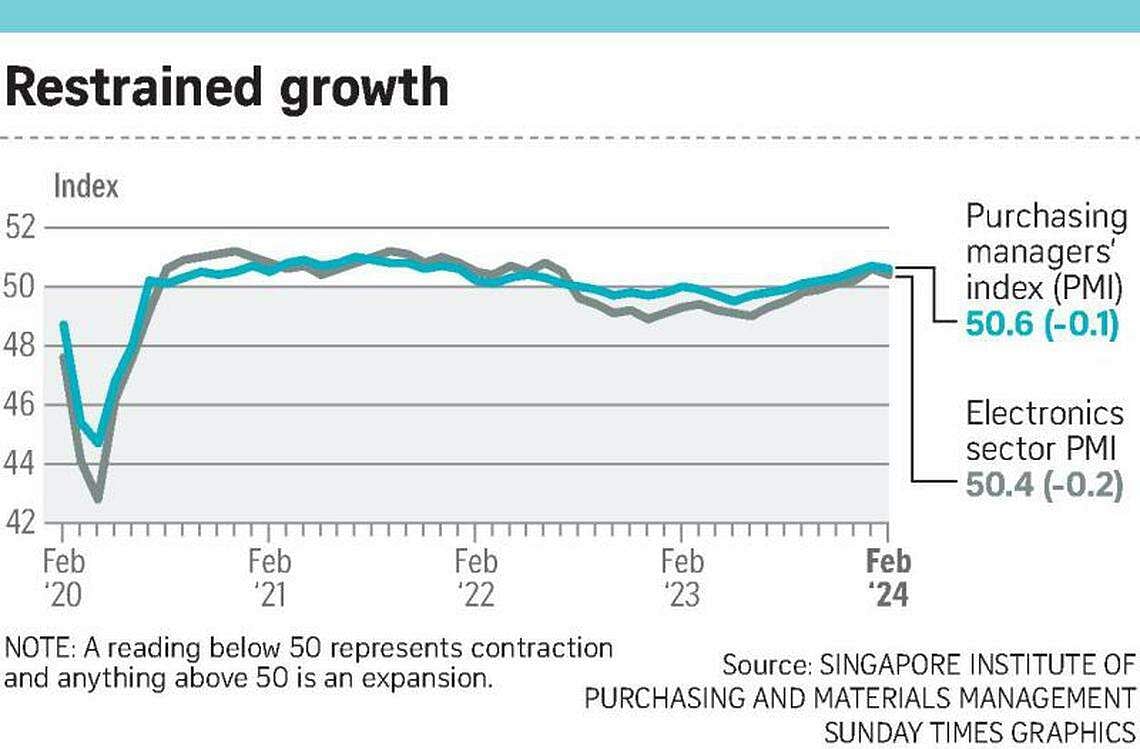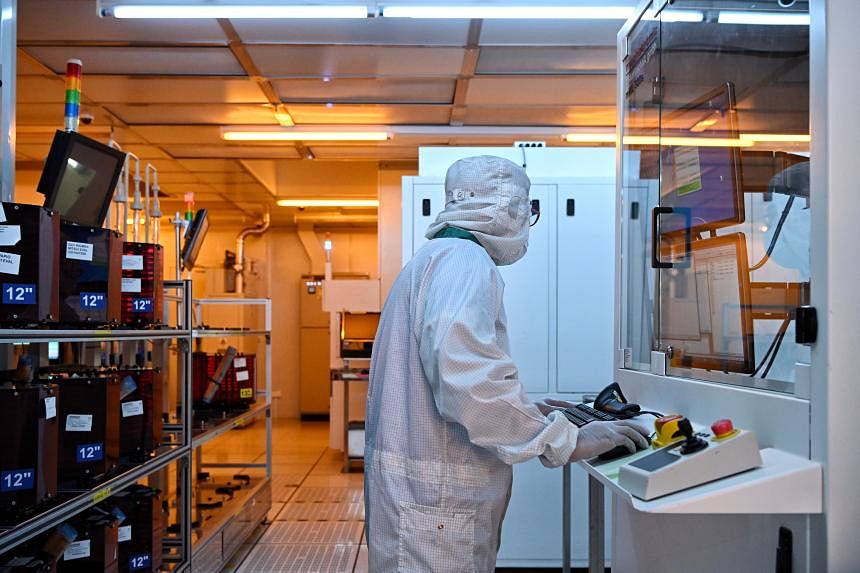SINGAPORE – Factory activity in Singapore stumbled in February, although the data still points to further expansion, with the electronics sector also following a similar trajectory.
The purchasing managers’ index (PMI), a barometer of the manufacturing sector, slipped to 50.6 points in February, down from 50.7 points a month earlier, according to the latest data released by the Singapore Institute of Purchasing and Materials Management on March 2.
Meanwhile, the PMI for electronics, a key sector of manufacturing, also dipped to 50.4 points, down from 50.6 points recorded in the month before. Readings above 50 points denote growth, whereas those below 50 indicate contraction.
The overall expansion in manufacturing – for the sixth consecutive month – was underpinned by a continued but mildly slower expansion across most key indexes, including new orders, new exports, factory output and employment.
Only stocks of input purchases and finished goods expanded at a faster clip, while supplier deliveries contracted for a ninth month, although the contraction showed a deceleration.
Analysing the data, DBS Bank economist Chua Han Teng said the February slowdown remained a kink in the bigger trend, largely due to the fewer days in the month, as well as the Chinese New Year holidays.
Other economists held similar views. Essec Business School associate professor of economics Jamus Lim characterised the February reading as a “blip, at least in the near term”, while OCBC Bank chief economist Selena Ling viewed it as a “minor step back”, one that was “not unexpected, given the fewer working days in the month”.
Delving into the data, Prof Lim noted: “The most revealing sub-indicators are new orders, and secondarily, new exports, because they are the most forward-looking.”
That both retreated by the same degree as the overall manufacturing index “speaks to how the signal is real, rather than some statistical anomaly”, he noted.
Prof Lim, however, felt that given the momentum from the sustained expansion since the middle of 2023, “it will be some time before we would expect a genuine turning point”.
Ms Ling was more circumspect, and said the underlying data suggests that first-quarter growth momentum may be restrained.
She noted: “This bears watching, whether this trend sustains over the coming months, although at this juncture, I believe that both the manufacturing and electronics stabilisation and the recovery trajectory remain intact.”
Peering into the second half of 2024, Prof Lim expects greater uncertainty. He said: “There’s a strong likelihood the US Federal Reserve will not touch interest rates until then – given that the US consumer has continued to defy expectations.
“This means there will be additional pressure on aggregate demand. Hence, I do not expect us to remain in expansionary territory come June or July.”

Mr Chua appeared more optimistic. “Singapore’s electronics manufacturers should benefit from the turnaround in the global electronics cycle and demand. We see signs of improving demand – from expansion in new orders, new export orders, and accumulating backlog orders,” he said.
He conceded, however, that the recovery appears patchy and added: “We will have to watch for signs that electronics output is rebounding to expansion in the subsequent months to ascertain that the recovery is firming.”
Mr Chua pointed to the continued contraction in supplier deliveries for both the headline manufacturing and electronics PMIs, saying that these reflected “potential choke points in global supply chains, possibly due to the ongoing Red Sea disruptions”.
“Lingering geopolitical tensions that could still disrupt supply chains would keep Singapore’s manufacturing recovery gradual and fragile,” he said.
The bottom line, though, is that because February is the shortest month of the year, and given the disruption to factory activity due to the Chinese New Year festivities, it will be hard to divine the future based on the data for just the month, all three economists conceded.


